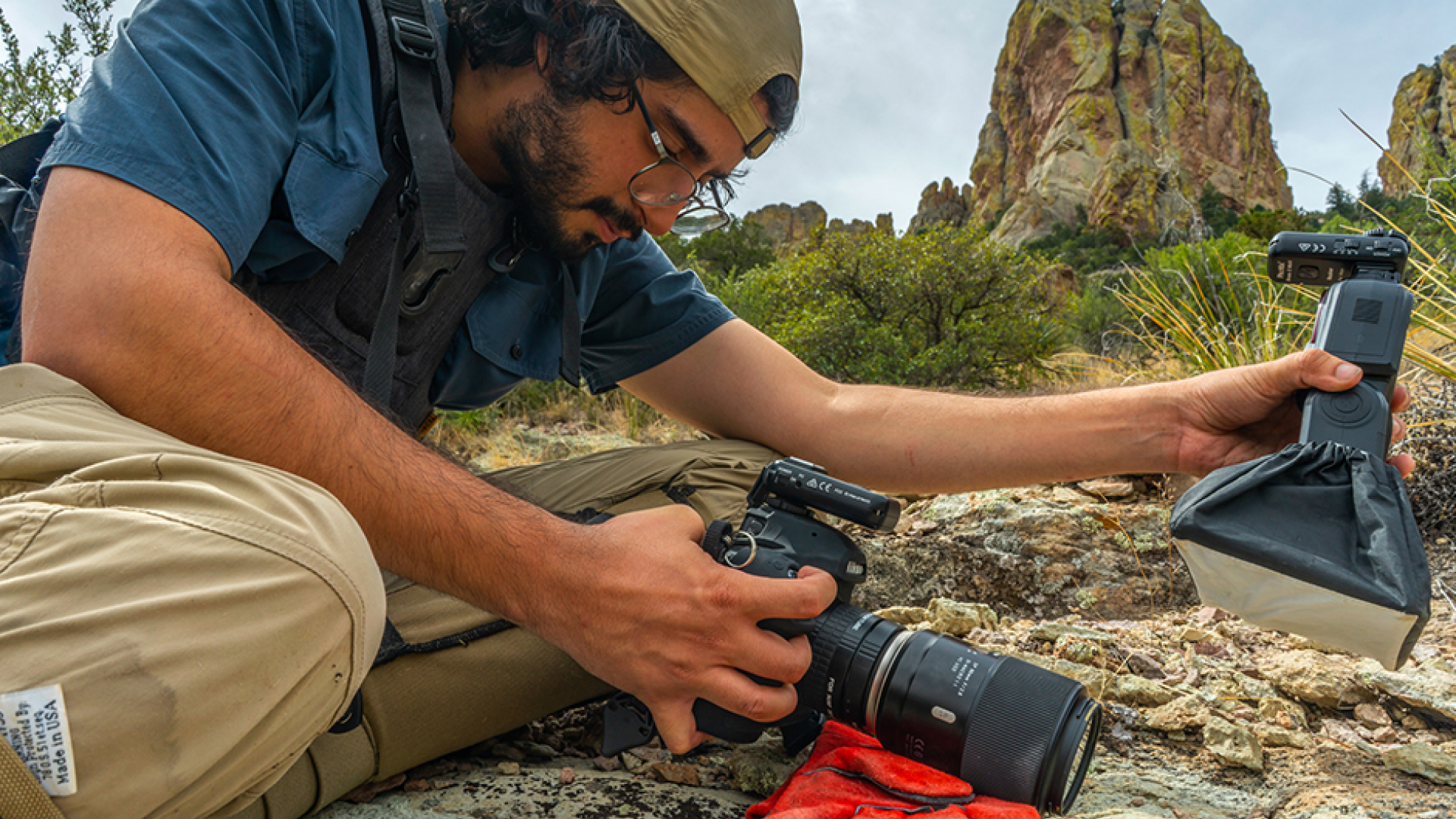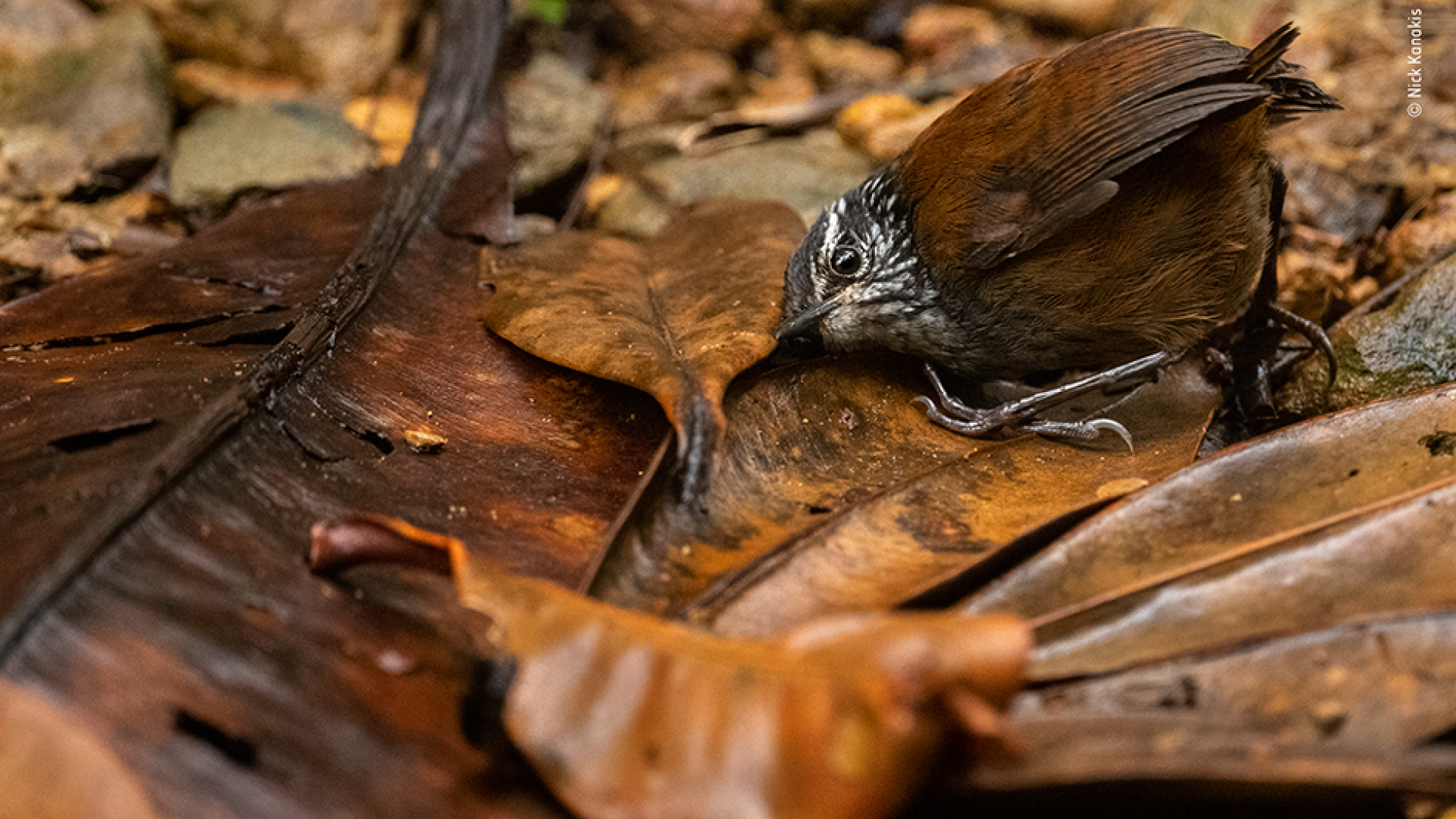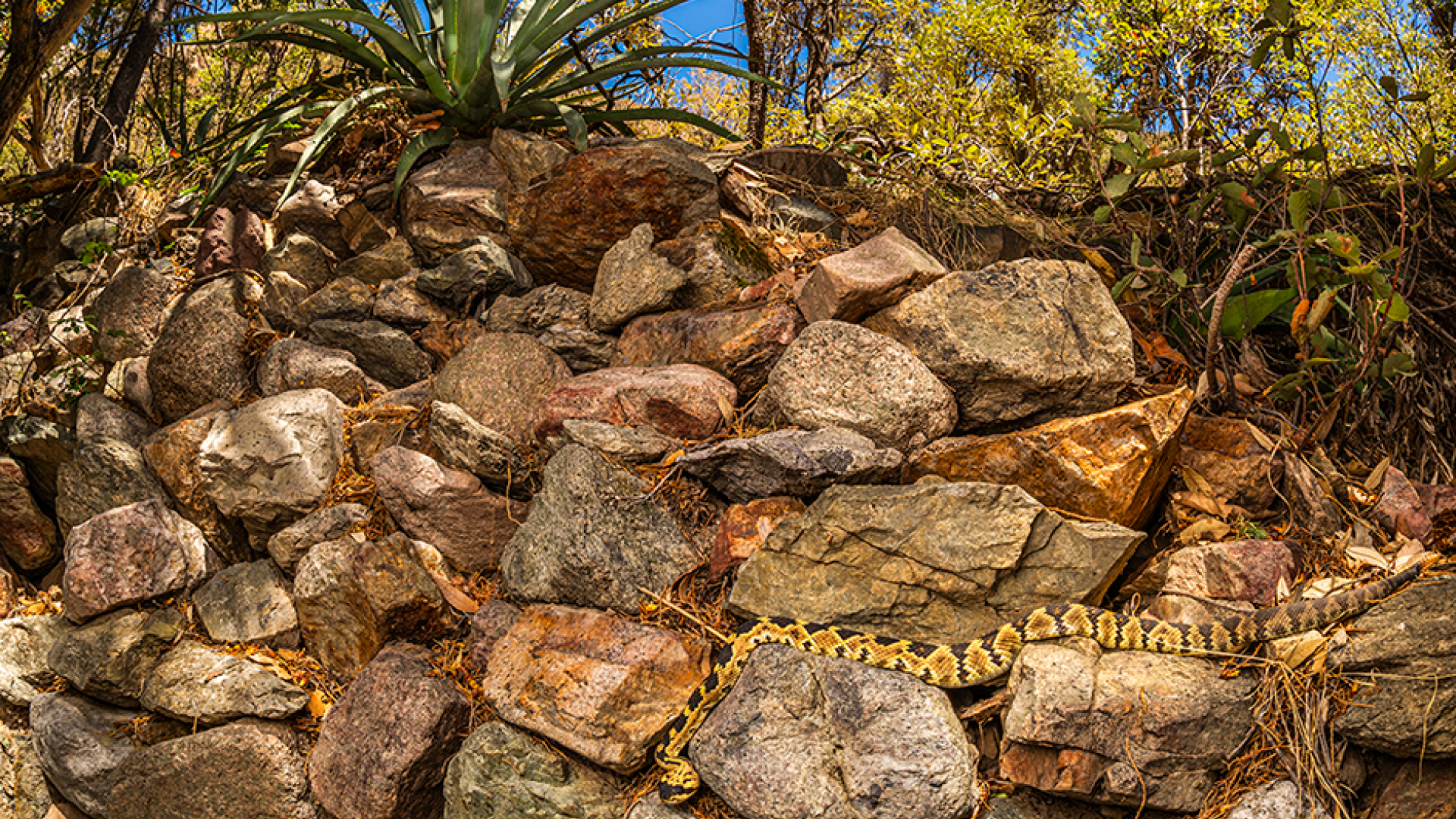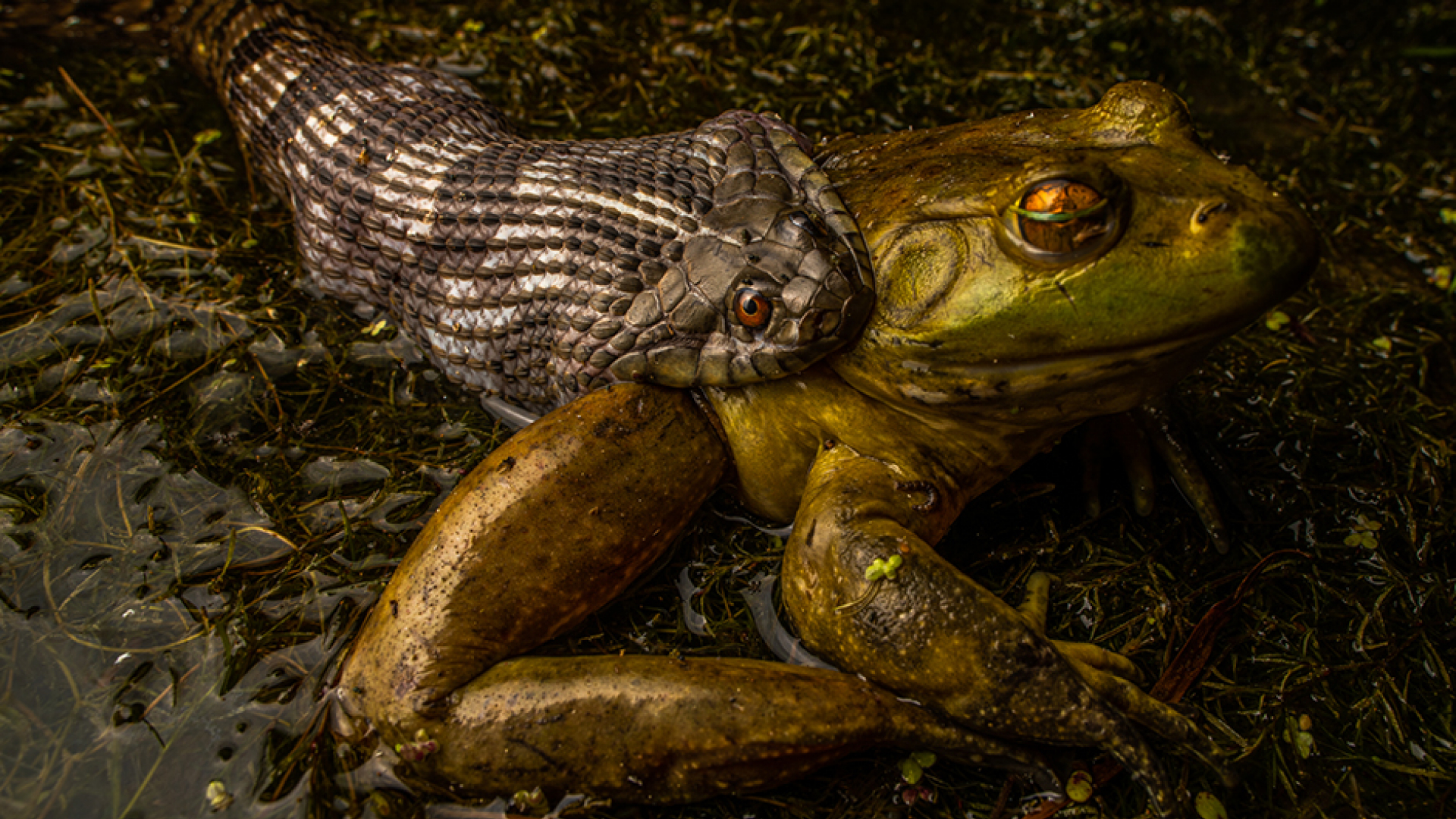Wildlife Photographer of the Year winner Nick Kanakis talks about that winning shot that got him the prize in 2022, his love for snakes, and his advice for young photographers.
To Wildlife Photographer of the Year (WPY) winner Nick Kanakis, all snakes are adorable. Even the venomous ones that hiss, rattle, and bite.
This obsession began when he was just a toddler. According to family lore, Nick was wandering around his grandparents’ yard in rural Texas, where he scooped up a baby copperhead with a Tupperware container. Beaming with pride, he brought the venomous snake back to his family, who “absolutely panicked.” From there, Kanakis’s obsession with wildlife only grew. In elementary school, he spent recesses looking under rocks and brushing aside leaves to discover frogs and bugs. As an adult, he turned his passion into a profession, working as an ecologist for Audobon Texas, where he managed donors, taught students, and contributed to policy.
“When you’re on the non-profit side of things, you do all the stuff, whether it matches the job title or not,” Kanakis told me.
It was only about six years ago when Kanakis first picked up a camera to document wildlife in the field. After messing around with a basic point-and-shoot, Kanakis upgraded his hardware, transforming a hobby into an irreversible obsession. Then, under the tutelage of his friends Javier Aznar and Karine Aigner—WPY 2022’s grand winner—Kanakis honed his craft. Now, at age 32, he’s a full-time photographer who’s so good he has two photos in this year’s exhibition, including The Listening Bird, which won the birds category.
From his apartment in Dallas, Texas, Kanakis talked to me recently about how he got that winning shot, his top bucket-list photo, and his advice for young photographers. This is our conversation.
Congratulations on The Listening Bird. Can you describe what’s happening in the photo?
This is a grey-breasted wood wren, a frequently encountered species through the mountain spines of southern Mexico and northern Andes. They’re extremely loud. I hear them all the time, but typically views tend to be little flashes—them bounding through the forest, maybe scolding you if you get a little too close. I was in the field with a friend who’s an ornithologist in this part of Colombia, and we heard this family group. It was kind of a slow morning, so I was like, “Alright, let’s take a minute and see what they’re going to do. Maybe they’ll come in the open for once.”
The adults didn’t, as usual, but then I saw this little young one in the back exhibiting a behaviour that had not been seen in this species before—listening for food sources.
Talk to me about Rattlesnake Hotspot. What are we seeing in this photo?
In the lower right part of the frame is a stretched-out, large black-tailed rattlesnake—one of the most beautiful and docile vipers I've ever seen or worked with. They're not terribly uncommon, but this colour morph is specific to what's called the sky island regions of the southwestern United States and northern Mexico. And this snake, along with many other animals in the region, is suffering through an oppressive drought due to climate change.
In this mountain range, if you find a rock wall or a rock pile, there's a good chance there's a rattlesnake in there. I was staying near the crumbled walls of an old gold mining camp, and I thought it would be really cool to capture a snake doing something there.
That’s why I went to this spot, day after day, and hoped to find a snake basking there. That stunning rattlesnake obliged.
How does your background as an ecologist inform your approach to photography?
In the images, I want to have interactions at play with an organism in its community and ecological systems. That's kind of what you would study in the field. And I think that, with photography, you can get little snapshots of these much larger pictures that are extremely abstract when looking at it from a scientific scale.
What do you hope people take away from your work?
With Rattlesnake Hotspot, just to see a snake calm. When people are photographing animals that kind of have a bad reputation, a lot of the times the photos play into that. So, a rattlesnake might be standing up, buzzing its tail, and people [might] perceive it as a terrifying sign of aggression, when it’s just defence. Probably the second after taking that photo, they would run away. So, I was glad the competition gave a platform to these animals, showing them relaxed in their environment, just minding their own business in a beautiful setting.
For The Listening Bird, just this idea that you have these ubiquitous animals, these little brown things most people would ignore. And, for me, it kind of shows that if you spend a little more time observing, then something really interesting could happen.
Is there a photograph you’re most proud of?
Yeah, I think so. [laughs]
The very first time I bought a wide-angle lens, like in fall of 2019, I took it to my local patch not too far from my apartment here in Dallas. It's a wetland preserve that hosts extraordinary biodiversity right outside of the city. And I saw a diamondback water snake eating a bullfrog. It was just the most perfect in-situ moment I've possibly ever seen—in-situ meaning nothing is being manipulated, which is usually how I work.
Is there one shot you’ve always wanted to get, but couldn’t?
Rattlesnake combat. Two duelling males, who stand up, intertwine necks, and assert territorial dominance over the other. Something like that would be really brilliant to see.
What should I have asked you about, but didn’t?
Hmmm.
One thing that social media has done really well is given people like me, who had no background in this field, a chance to get in. But it can be kind of an echo chamber. So, when you see people shooting portraits of animals, reptiles, and amphibians, they tend to be manipulated, and these animals can experience a lot of stress, even pathogen transfers.
To those people who are getting into photography, I would emphasize that you can take really nice, high-quality shots that do not cause stress to the animal. So, a golden rule I use when working with amphibians is I only handle them if they’re on the road where their lives are endangered. And then I move them off the road. But when I’m in the field hiking, I try to stay completely hands-off.
Do you have any other guiding principles to your work?
We’re always going to have some kind of a disturbance on the systems we're visiting, whether just passive, like crunching leaves on the trail, or actually bushwhacking through sensitive habitats to find something rare.
So, we always need to be cognizant of our impacts.




